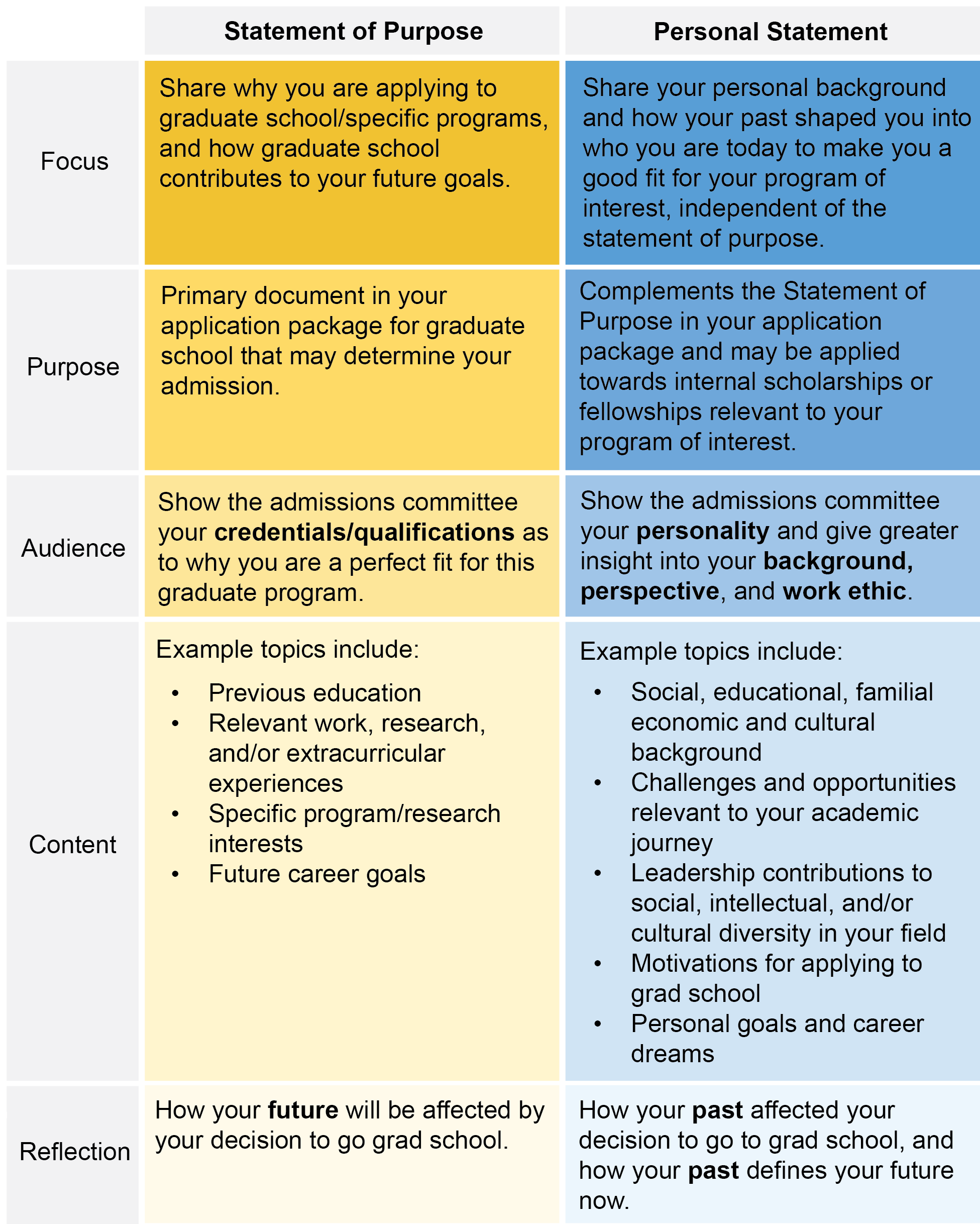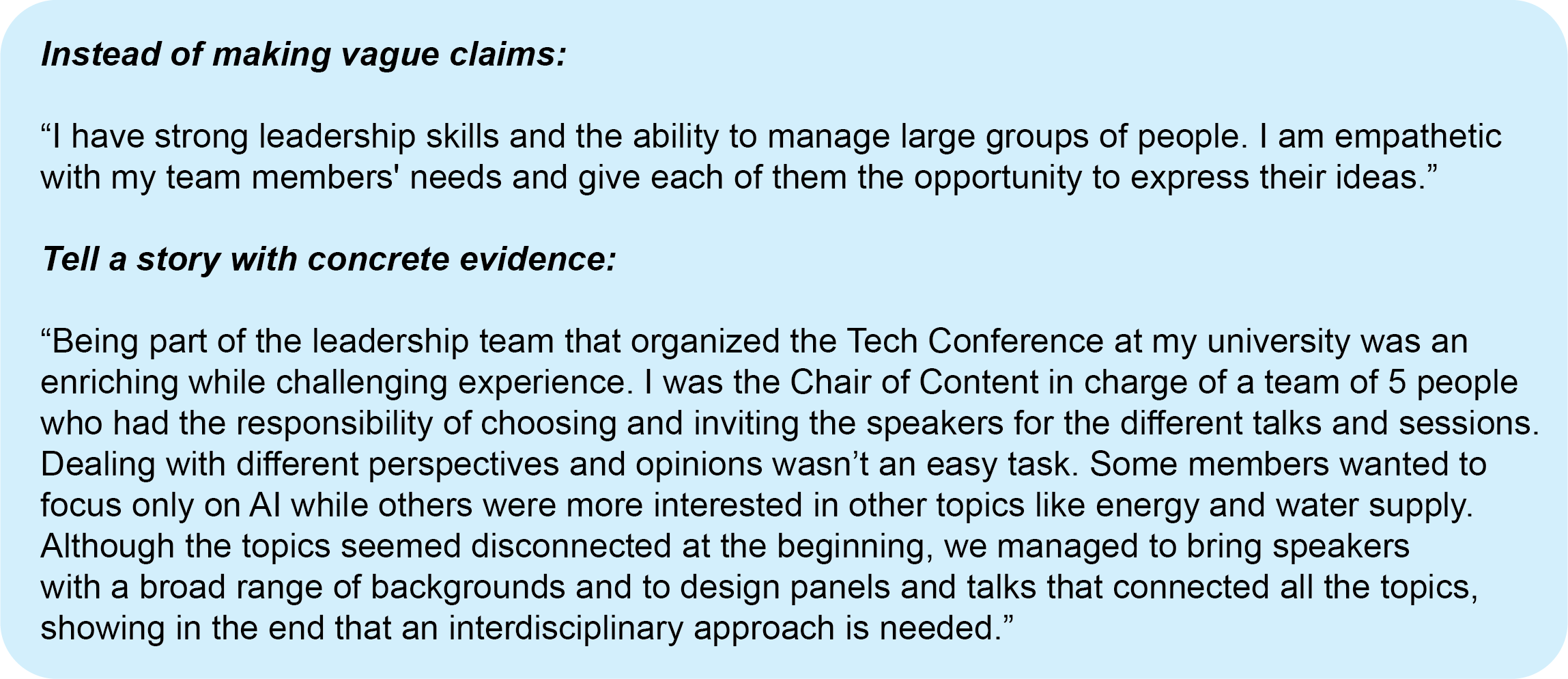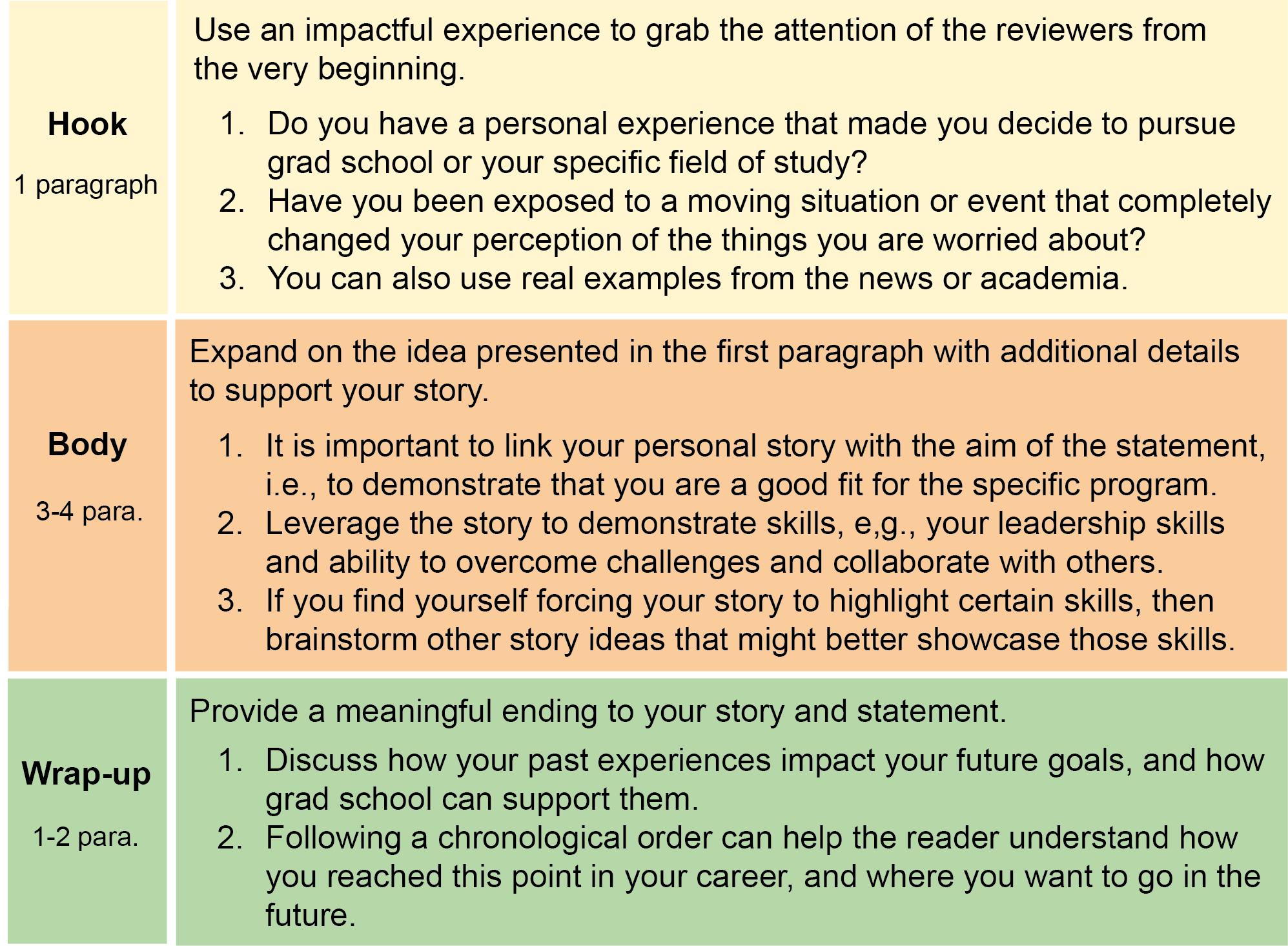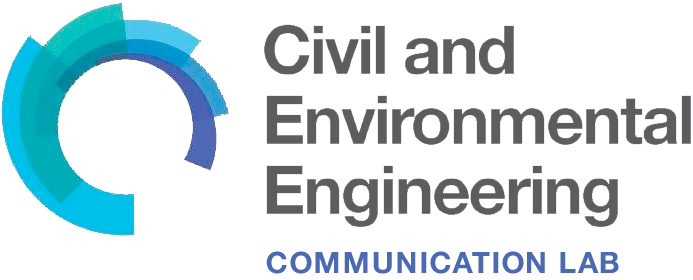By Michelle Zhang and Ignacio Martin Arzuaga Garcia
When applying to graduate school programs, you will need to provide a Statement of Purpose and a Resume/CV highlighting your interests in applying to a specific graduate program. Some graduate schools will also require a Personal Statement as part of your application package. This CommKit article will go over what a Personal Statement is and some strategies to approach writing one. Your Personal Statement can also be revised for future fellowships and scholarships beyond graduate school application.
Main takeaways
- Have an initial hook. The first paragraph of your statement is key to grabbing the attention of the reviewers.
- Tell a story about yourself. The Personal Statement is thought to be more informal and less structured than the Statement of Purpose. Although some formality in the writing should be preserved, in this statement you have the freedom to express yourself and show the reviewing committee who you really are.
- Be specific and avoid clichés. Reviewers will read a vast amount of Statements from different candidates. Thus, they are looking for concrete evidence of your personality, the culture of work, and the achievements that make you stand out from the pool of candidates. For this purpose, avoid vague sentences that don’t give any additional information to what you already explain in your other documents of the application package.
“Statement of Purpose” vs. “Personal Statement”
As touched upon in our Statement of Purpose (SOP) CommKit article, many schools distinguish between the Statement of Purpose/Objective and the Personal Statement, providing different writing prompts for each. The main difference between these two types of essays is that the Statement of Purpose focuses on your professional background, goals and research interests, while the Personal Statement is more about your personal history and where your motivation for graduate school comes from. The table below summarizes key differences between the two documents.

Purpose
While the Statement of Purpose primarily focuses on your academic and professional goals, the Personal Statement complements it by providing a more holistic understanding of you as a graduate school candidate. It allows you to go beyond your achievements and qualifications listed in your Resume, offering a narrative that reveals your character, values, and any transformative moments that have driven you to pursue higher education.
In the Personal Statement, you can share specific life experiences (e.g. being a first-generation college student, overcoming poverty, facing discrimination, or other challenges/opportunities) and explain how these have shaped your worldview and passion for your chosen field of study. By sharing these personal stories, you have the opportunity to highlight what is unique about yourself and how you will advance diversity within the institution.
It is worth noting that the Personal Statement may be referred to by different names depending on the institution or program. Some schools may use terms such as “Personal History Statement,” “Diversity Statement,” or other variations. Some schools may also provide specific prompts to write the Personal Statement on, or a list of questions to answer. Regardless of the name, the purpose remains the same—to provide you as an applicant with an opportunity to share your personal narrative and demonstrate your readiness for graduate-level studies.

Strategies and Common mistakes
Here we summarize a list of strategies and common mistakes to take into consideration when addressing your Personal Statement:
- Your statement should tell a story (a real one) about yourself, that shows the reader your personal journey upon this moment in your life and what are the next steps you are aiming to take.
- If you can’t find a personal story to tell, you can also share how a piece of news or a specific person (for example) impacts and/or inspires you.
- Make sure to align your story with the values and goals of the university or institution you are applying to.
- For grad school applications, your Personal Statement doesn’t need to list your skills or academic accomplishments, but to present a story that demonstrates those skills you possess. For example, your statement is a good place to prove your leadership skills through a real example.
- While in a Statement of Purpose the Admissions Committee will look for what you have done, in a Personal Statement they will prioritize how you addressed them. They will put attention on how you overcame the challenges you faced, what strategies you used to do it, and how you took advantage of the opportunities you were given.
- The Personal Statement can also be a good opportunity to “address the elephant in the room” if you haven’t done it in your Statement of Purpose. For example, if your grades at college are not as good as desired, or you don’t have experience in the field you are applying to, this document is a good place to explain the reasons for that. We all go through difficult times, make bad decisions, and want to make a change in our path. That’s not a problem. What we don’t have to do is to expect the reader will ignore that part. They won’t, and it is better to address those weak points in our application package rather than leave them without any explanation.
- Use concrete examples that speak for you. Be specific. Avoid vague statements that don’t give any piece of information about yourself, or to make statements about yourself without proving them.

Ultimately, the key is to offer an interesting piece of writing that the reader enjoys, and make them remember your profile when evaluating the pool of candidates.
Structure Diagram
The Personal Statement is more flexible than the Statement of Purpose and, initially, it doesn’t have a fixed structure you have to fit your content within. Everyone’s path and personal history are different, and that will frame your write-up. You are welcome to be creative and address this document as you feel more comfortable with it. However, here we suggest a tentative structure that you can use to help you organize your statement. We recommend 2 pages maximum, unless specified otherwise by the university.

Alternatives to the Personal Statement
Some universities are also exploring innovative approaches to evaluate applicants beyond traditional methods. These alternatives provide aspiring graduate students with unique opportunities to distinguish themselves and showcase a holistic view of their skills, experiences, and potential. Some examples of alternative documents to the Personal Statement include:
DEI (Diversity, Equity, and Inclusion) Statement:
- Graduate school applications are increasingly incorporating DEI essays as a means to evaluate applicants’ commitment to fostering an inclusive academic environment and dedication to cultivating a diverse and inclusive community within their chosen field of study. These essays provide candidates with an opportunity to showcase their understanding, experiences, and actions related to promoting diversity and equity.
- Your personal statement can be adapted to help write your DEI statement by focusing on key elements such as contributions to Diversity, values/beliefs as related to Diversity, Equity, and Inclusion, and self-reflection/growth from experiences where you have actively engaged with diverse communities, challenged biases, or learned from different perspectives.
Video Essays:
- Some universities are incorporating video essays into their application process, allowing applicants to verbally express their motivations, goals, and academic passions.
- This alternative provides a platform for candidates to showcase their communication skills, confidence, and presentation abilities.
- When adapting this Personal Statement CommKit for video essays, you should focus on developing a concise script that conveys your key points effectively, following the flow suggested above.
- You should also aim to strike a balance between authenticity and professionalism while engaging the audience with a compelling narrative.
Portfolio Submissions:
- To evaluate practical skills and creative abilities, some graduate programs request applicants to submit portfolios showcasing their work. Whether this is in fields such as engineering, design, fine arts, or computer science, this alternative allows candidates to present tangible evidence of their talent and expertise.
- When adapting your personal statement for portfolio-based applications, you should provide context for your work, explaining the motivation behind your projects and highlighting the skills you have developed throughout your academic journey.
When is it time to submit?
The Personal Statement may appear more approachable at the beginning, given its flexibility and relaxed tone. However, finding a good story to tell, and a compelling narrative that effectively showcases your abilities and accomplishments can be hard. Seeking feedback from friends, family, and peers can be invaluable throughout the brainstorming and revision process. If you’re affiliated with MIT you can also make an appointment with a Comm Fellow. In addition to carefully proofreading your statement, don’t forget to check the program requirements to ensure your submission meets the audience’s expectations.
Helpful articles
Gotian, R. & Neill, U. S. (2023). How to Write a Strong Personal Statement. Harvard Business Review.
Purdue Online Writing Lab. Writing the Personal Statement.
Additional reading
Check out the full collection of free CommKit Resources created by the MIT CEE Comm Lab team.
